People often ask me what I eat. So I thought I would start a series of blog posts detailing what I eat and why, month to month.
Please don’t take this blog post as me telling you what you should eat. What works for one person will be different to what works for another. We all have different needs – different health status, different genes, different gut microbiomes. You need to experiment to find what works for you.
I am simply describing what I eat to give you ideas and to show how I try to implement a nutrient-dense, anti-inflammatory diet. I am constantly reading, researching and then tweaking my diet to see what makes me feel my best. I recommend you do the same.
In Season, Local, Organic
- I try to eat seasonal produce as much as I can. In season this month (April): Rhubarb, Jersey Royal New Potatoes, Purple Sprouting Broccoli, Radishes, Spring Onions, Spinach, Watercress, Cauliflower, Spring Greens, Wild Garlic, Rocket, Lettuce, Broccoli, Carrots, Morel Mushrooms, Artichokes, Beetroot, Cabbage, Chicory, Kale, Parsnips, Sorrel. I include all of these on my shopping list and try and add as many of them as possible to my basket whenever I shop. Follow us on Instagram @paleobritain for seasonal food ideas
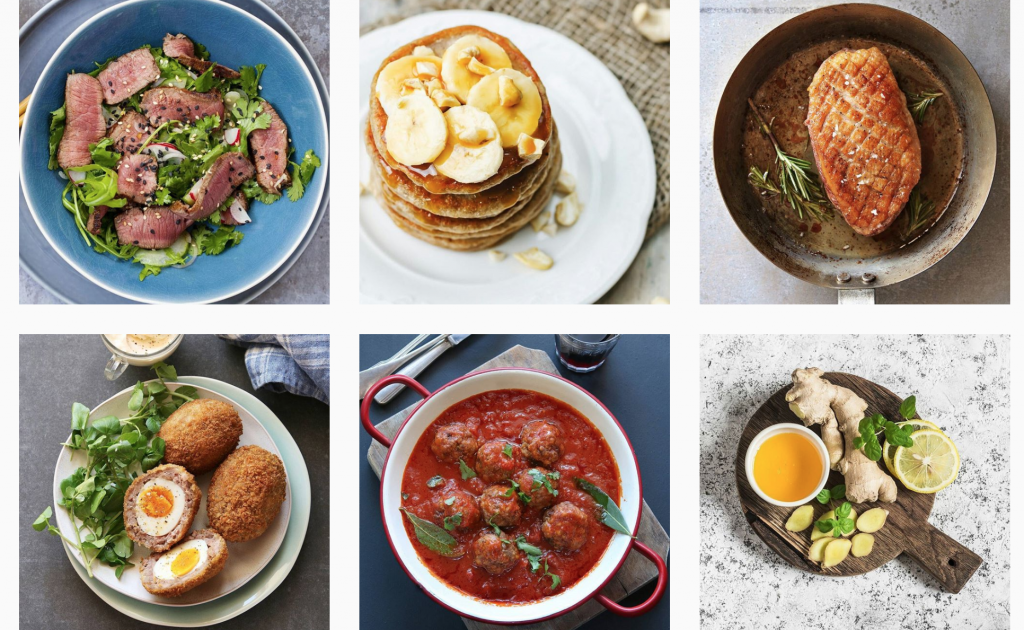
- Buying local produce is really important to me. I mainly shop in my local farm shops. I am really lucky to live near Plawhatch Farm, a biodynamic, organic farm in Sussex. I shop here for raw, grass-fed dairy, raw sauerkraut and organic, seasonal vegetables, particularly organic greens. They also sell biodynamic wine which I plan on trying soon (see more on alcohol below.)

- I try to always eat organic produce, although I am not religious about it. I have a weekly large organic vegetable box delivered from Abel & Cole. I like doing this because it means I get local, organic and seasonal veg delivered each week without having to really think about it.
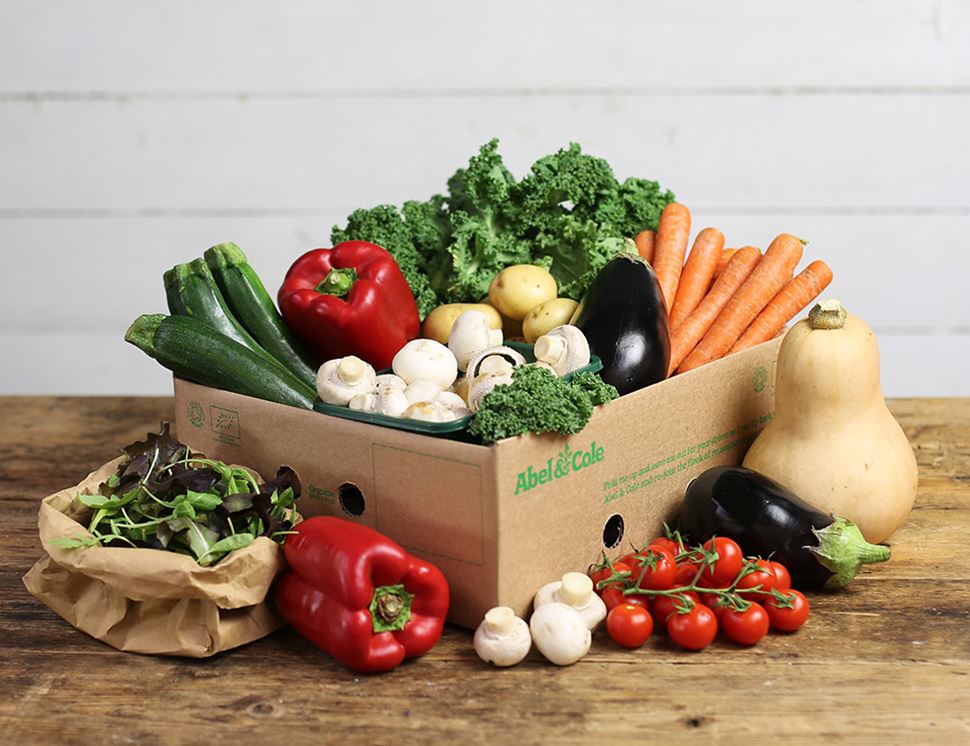 I also try to prioritise organic, grass-fed meat. I buy most of my meat from Ocado – they have a good selection of organic meat from suppliers such as Eversfield Organic and Duchy Organics.
I also try to prioritise organic, grass-fed meat. I buy most of my meat from Ocado – they have a good selection of organic meat from suppliers such as Eversfield Organic and Duchy Organics.
My diet this month has been influenced by three books I have read recently.
- Younger by Dr Sara Gottfried – The Breakthrough Programme to Reset our Genes and Reverse Ageing
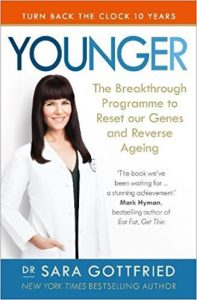 Sara Gottfried’s new book is brilliant. It is not the easiest book to read but contains lots of fascinating information and things to explore further. She has taken a really up-to-date look at the research on genetics, epigenetics and nutrigenomics. In the book Dr Gottfried looks at seven genes that affect ageing, and the diet and lifestyle factors that can switch these genes on or off. As a result of reading this book I ordered and sent off my 23andMe genetic testing kit
Sara Gottfried’s new book is brilliant. It is not the easiest book to read but contains lots of fascinating information and things to explore further. She has taken a really up-to-date look at the research on genetics, epigenetics and nutrigenomics. In the book Dr Gottfried looks at seven genes that affect ageing, and the diet and lifestyle factors that can switch these genes on or off. As a result of reading this book I ordered and sent off my 23andMe genetic testing kit
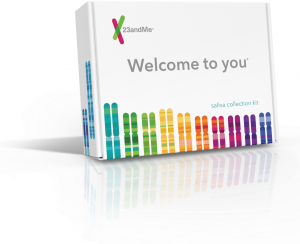 There is a new service called StrateGene (pronounced like strategy but with gene instead of g) developed by Ben Lynch which allows you to analyse the raw data from your 23andme and find out about lots of biochemical pathways in the body and what your specific gene variants mean. As soon as I get the results back from this (I believe in about 8 weeks) I will write a blog post about the findings. There is a lot more to the Younger protocol than just food. Over 7 weeks the protocol focuses on a different aspect of health & wellness each week. However, the dietary recommendations are essentially low-carb paleo. Dr Sara advises avoiding dairy and gluten, minimising grains, avoiding sugar and refined carbohydrates and eating limited wholefood carbohydrates. She recommends you fill your plates with 80% vegetables (including limited wholefood carbohydrates such as starchy vegetables and tubers) and 20% protein, which can include nuts and seeds. You are advised to eat green vegetables twice a day, wild caught fish twice per week, avoid toxic fats and to drink bone broth.
There is a new service called StrateGene (pronounced like strategy but with gene instead of g) developed by Ben Lynch which allows you to analyse the raw data from your 23andme and find out about lots of biochemical pathways in the body and what your specific gene variants mean. As soon as I get the results back from this (I believe in about 8 weeks) I will write a blog post about the findings. There is a lot more to the Younger protocol than just food. Over 7 weeks the protocol focuses on a different aspect of health & wellness each week. However, the dietary recommendations are essentially low-carb paleo. Dr Sara advises avoiding dairy and gluten, minimising grains, avoiding sugar and refined carbohydrates and eating limited wholefood carbohydrates. She recommends you fill your plates with 80% vegetables (including limited wholefood carbohydrates such as starchy vegetables and tubers) and 20% protein, which can include nuts and seeds. You are advised to eat green vegetables twice a day, wild caught fish twice per week, avoid toxic fats and to drink bone broth.
- Primal Fat Burner by Nora Gedgaudas – Live Longer, Slow Aging, Super-Power Your Brain, And Save Your Life With a High-Fat, Low-Carb Paleo Diet
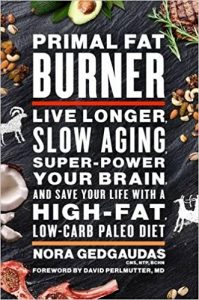 This book is really interesting, but I don’t 100% agree with the conclusions drawn. Nora Gedgaudas recommends everyone should be eating a high-fat ketogenic diet. While I do believe there are benefits to this type of diet, I am yet to be convinced that EVERYONE should be eating this way, ALL the time. The lessons to take away from this book are the importance of eating high quality (grass-fed & finished/organic/free-range) animal products, the importance of fat – particularly for brain function, and that eating A LOT of vegetables is key to good health. Nothing new here really. I enjoyed the evolutionary arguments about why we should eat meat and fat but I think Nora Gedgaudas leaves out some important evidence such as the recent discovery that perhaps not all Neanderthals ate as much meat as we once thought. Where this book differs a lot from the advice in Younger is that Sara Gottfried recommends we get more of our animal protein from fish and marine sources than from meat. Nora Gedgaudas says we should avoid most seafood due to concerns over mercury toxicity and radiation and get more of our protein from grass-fed animals.
This book is really interesting, but I don’t 100% agree with the conclusions drawn. Nora Gedgaudas recommends everyone should be eating a high-fat ketogenic diet. While I do believe there are benefits to this type of diet, I am yet to be convinced that EVERYONE should be eating this way, ALL the time. The lessons to take away from this book are the importance of eating high quality (grass-fed & finished/organic/free-range) animal products, the importance of fat – particularly for brain function, and that eating A LOT of vegetables is key to good health. Nothing new here really. I enjoyed the evolutionary arguments about why we should eat meat and fat but I think Nora Gedgaudas leaves out some important evidence such as the recent discovery that perhaps not all Neanderthals ate as much meat as we once thought. Where this book differs a lot from the advice in Younger is that Sara Gottfried recommends we get more of our animal protein from fish and marine sources than from meat. Nora Gedgaudas says we should avoid most seafood due to concerns over mercury toxicity and radiation and get more of our protein from grass-fed animals. - Eat Fat, Get Thin by Dr Mark Hyman – Why the Fat We Eat is the Key to Sustained Weight Loss and Vibrant Health
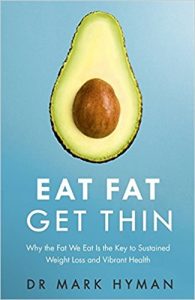 In Mark Hyman’s latest book he looks at the research on fat & saturated fat and it’s role in heart disease. As many others have done, he shows that the research is flawed, and what we have been told by the Government for years is just not true: there is no clear link between a high fat diet and heart disease, and no link between saturated fat intake and heart disease. If anything it is omega-6 fats from heavily processed vegetable oils, sugar and refined carbohydrates that more strongly correlate with heart disease than saturated fat does. Dr Hyman lays out a plan for a high-fat wholefoods diet that contains lots of vegetables, lots of fat and smaller quantities of high-quality animal products. Mark Hyman seems to have done a bit of a U-turn when it comes to his dietary recommendations. In the past he recommended a vegetarian diet to his patients, but now dedicates a few chapters of the book to defending meat (as long as high-quality) and discussing why a vegan diet many not be optimal. Read my post The Vegan Myth for my thoughts on veganism.
In Mark Hyman’s latest book he looks at the research on fat & saturated fat and it’s role in heart disease. As many others have done, he shows that the research is flawed, and what we have been told by the Government for years is just not true: there is no clear link between a high fat diet and heart disease, and no link between saturated fat intake and heart disease. If anything it is omega-6 fats from heavily processed vegetable oils, sugar and refined carbohydrates that more strongly correlate with heart disease than saturated fat does. Dr Hyman lays out a plan for a high-fat wholefoods diet that contains lots of vegetables, lots of fat and smaller quantities of high-quality animal products. Mark Hyman seems to have done a bit of a U-turn when it comes to his dietary recommendations. In the past he recommended a vegetarian diet to his patients, but now dedicates a few chapters of the book to defending meat (as long as high-quality) and discussing why a vegan diet many not be optimal. Read my post The Vegan Myth for my thoughts on veganism.
Common Recommendations from all of these Books:
- Base your diet on wholefoods
- Eat an omnivorous diet that contains both meat/fish and plants
- Limit carbohydrates (but they don’t all agree on what level this needs to be limited to)
- Eat organic and high-quality food, focusing on grass-fed animal products
- Don’t be afraid of fat but avoid toxic fats such as vegetable oils and trans-fats
- Avoid sugar and refined carbohydrates
- Avoid gluten
These recommendations are basically the recommendations of the paleo diet, even though they don’t all call their diet “paleo”. I have yet to read anything that convinces me to eat any other way than the way I do, which is unprocessed nutrient-dense foods including both plants and animal foods, and that’s why I still love the paleo diet and follow paleo principles.
If you are new to paleo (or have slipped into unhealthy habits), we have a 30 Day Paleo Plan which contains 30 days of meal plans with all the shopping lists and recipes done for you. You also get daily email support to explain exactly what the paleo diet is all about, why certain foods are excluded, and tips and inspiration to help you stay on track. You can sign up here.
A Typical Day of Eating for Me in April
First Thing: I always start the day with a cup of tea with a little milk (I buy raw milk from Plawhatch Farm) and 1 tablespoon Great Lakes Gelatin
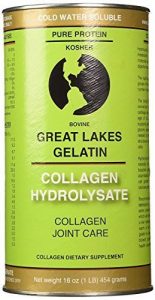
Gelatin is a source of collagen which is an easily digested form of protein that improves skin, hair and nails. It also has the following benefits: rich in antioxidants, lowers blood pressure, and may improve bone density. It is flavourless and dissolves easily in tea or coffee. You can also add it to smoothies.
Breakfast:
- 1 or 2 eggs (organic & free-range from Abel and Cole or Plawhatch Farm) with a large plate of vegetables and half an avocado. I usually pan-fry onions, garlic, mixed mushrooms and seasonal greens (kale/spinach/Spring greens/Cavolo Nero etc) in extra virgin olive oil and butter. Spring greens are in season at the moment and super cheap so I’ve been eating a lot of those. A couple of times a week I eat bacon at breakfast.
- Occasionally I will have a blueberry smoothie made with blueberries, coconut oil and coconut milk instead of eggs for breakfast, and very occasionally Paleo Granola with coconut yogurt or Banana Pancakes but I am not really a fan of sweet breakfasts anymore.
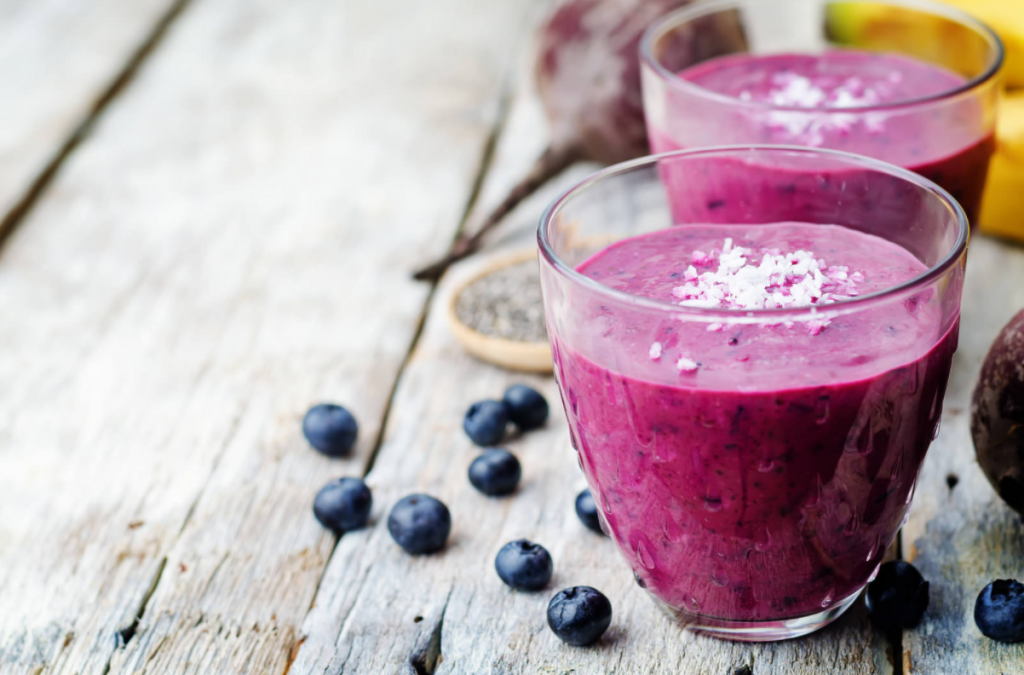
- I also have a glass of raw kefir each morning – I make my own kefir using raw milk that I buy from Plawhatch Farm. The cows are fed on grass and the farm is biodynamic so no antibiotics are ever given to the cows. You can read more about the benefits of kefir here and here but it is a wonderful source of probiotic bacteria and also a good source of many vitamins and minerals.
- Coffee made with raw cream or butter and 1 tablespoon MCT Oil. You can read more about MCT oil and why I use this brand here.
- Is coffee good or bad? Like everything it depends on who you are. Listen to Chris Kresser’s podcast where he discusses the research suggesting coffee is beneficial on the whole, but this depends on the individual and your response to coffee (which might differ depending on your stress levels, how much sleep you have had, your health status etc.)
- Chris Kresser also wrote an article entitled Coffee is good for you—unless it’s not! where he mentions a gene called CYP1A2 (this is also discussed in the book ‘Younger’ I mentioned above). A variant of this gene can make you a ‘slow-metaboliser’ of caffeine, and may mean coffee is not such a good idea for you. Once I get my 23andme results back I will update you on this and whether I am changing my caffeine consumption as a result!
Lunch:
- In the Winter I tend to eat a lot of soups and baked sweet potatoes but now that the weather is warmer I mainly have salads for lunch. I make a huge bowl of salad with lots of seasonal salad leaves. Watercress is in season at the moment and since it is the most nutrient-dense vegetable I eat it most days. I also buy a mixed bag of salad leaves from Plawhatch Farm each week that contains about 10 different kinds of seasonal leaves, which I use as the base for salads.
- I usually add a selection from tomatoes, cucumber, radishes, raw mushrooms, whole olives, sundried tomatoes, capers and fresh herbs, and nearly always add avocado for extra fat.
- For protein I will have wild smoked salmon, boiled eggs, or maybe some cold roast chicken or raw goat’s cheese.
- I make a dressing using extra virgin olive oil, raw apple cider vinegar, Sel de Guerande sea salt (which is high in trace minerals) and freshly ground black pepper. I then either add diced raw garlic & mustard to make a French-style dressing, or fermented miso & diced ginger to make an Asian-style dressing (goes well with chicken or raw mushrooms).
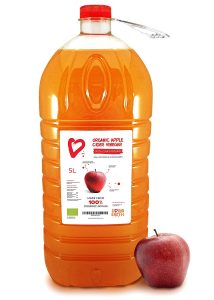
- I have recently found unpasteurised kombucha at my local farm shop so I have started drinking a glass at lunch. It is another good source of probiotic bacteria.
Snacks
- At the moment I am loving Hotel Chocolat’s 100% Dark Chocolate Drops. They are a little bitter and probably take some getting used to, but since I have been eating hardly any sugar recently they taste delicious to me.
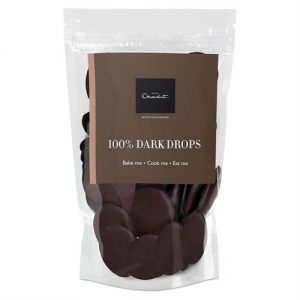
Dark chocolate has lots of health benefits including being a powerful source of antioxidants and a good source of many minerals. There is also evidence that chocolate is good for your gut bacteria – beneficial gut microbes ferment the fibre and the antioxidants in cocoa. Dark chocolate is surprisingly high in fibre – these contain 17g per 100g.
Dinner:
- Dinner is different every night. We usually eat meat, fish or seafood most nights, only occasionally having a meat-free dinner. We try and rotate between salmon, haddock, hake, cod, prawns, beef, lamb, chicken and pork, and more rarely duck, turkey and venison to get a variety of different nutrients. I wish I liked salmon more (I eat smoked salmon, but hate fresh salmon) because it is such a good source of omega-3 fats and other nutrients. If you like salmon I would definitely recommend you eat it once or twice a week. I try and eat smoked salmon twice a week to get the nutrients but fresh is better.
- We usually have three different kinds of vegetables with dinner, one or two of them green vegetables.
- Some meals we have eaten in April:
- Paleo Shepherd’s Pie made with lamb mince with cauliflower mash topping & served with spinach, kale and leeks
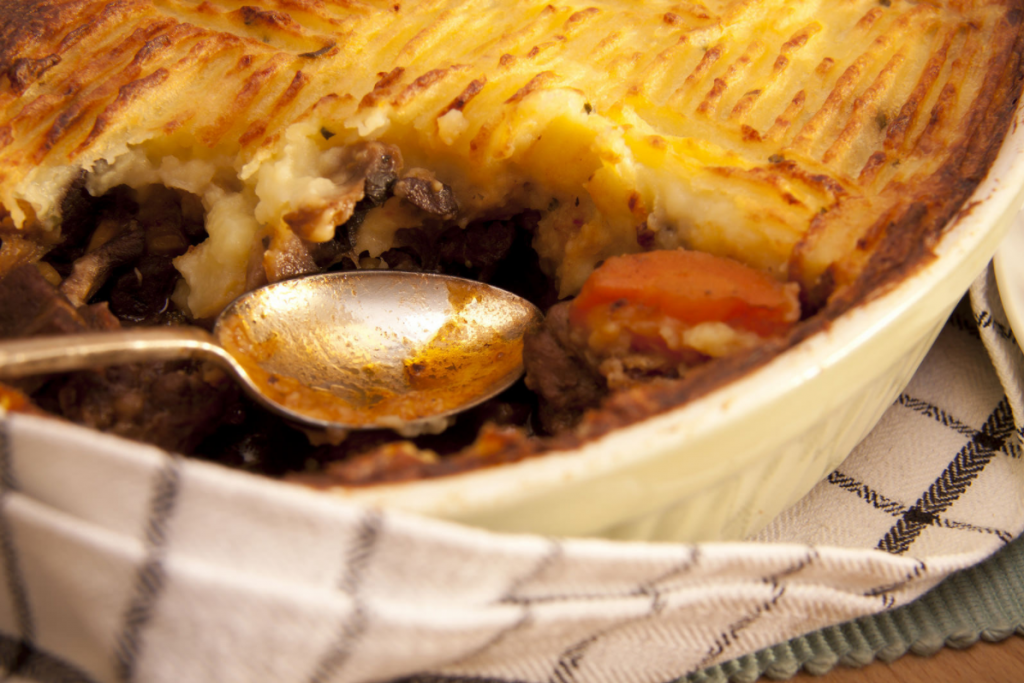
- Crispy Slow Cooked Pork Belly with celeriac chips, Cavolo Nero kale & purple sprouting broccoli
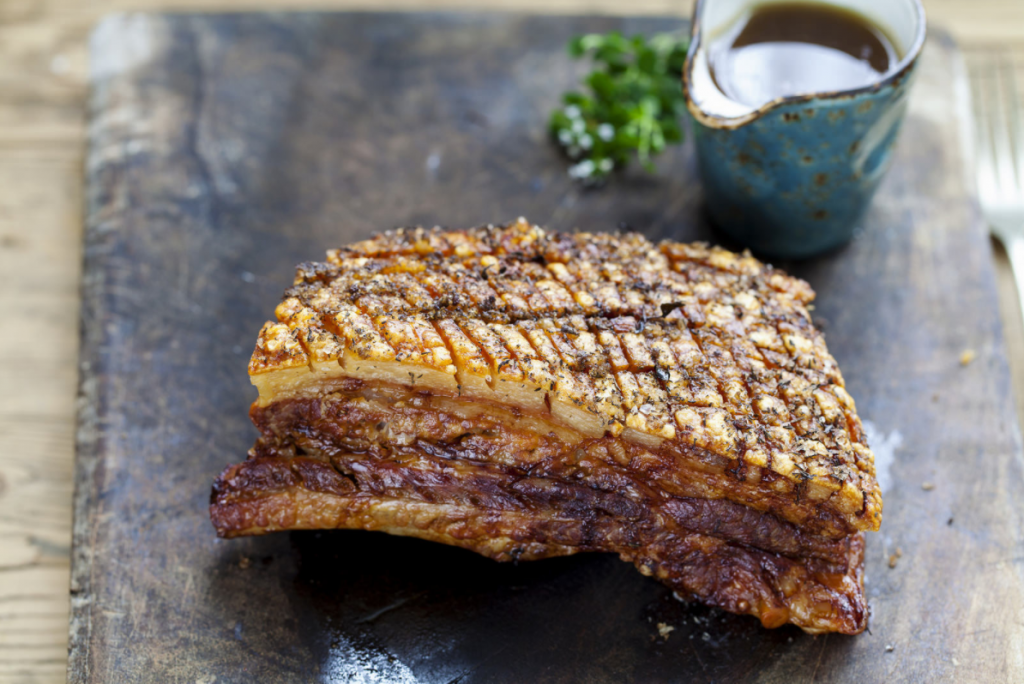
- Chicken Curry made with lots of vegetables served with Cauliflower Rice & spinach
- Bolognese served over Spring Greens with raw Parmesan
- Lamb Cutlets with tomatoes, homemade mint sauce & broccoli mash
- Haddock with Tomatoes & Spinach served with leeks, kale and Cavolo Nero
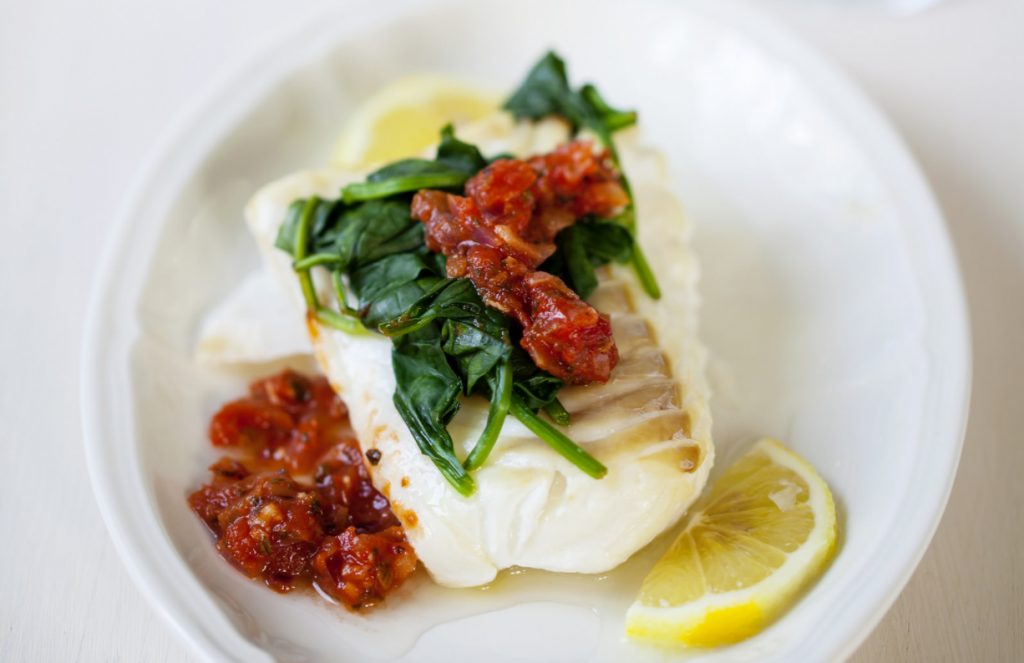
- I’m sure it sounds very boring but we really do only eat dessert once a week (on Sundays). On weeknights we usually eat dark chocolate if we fancy something after dinner. This month I made a Rhubarb Crumble using tiger nut & green banana flour, both really high in resistant starch. We served it with raw cream but you could also make cashew cream to serve it with if you completely avoid dairy.
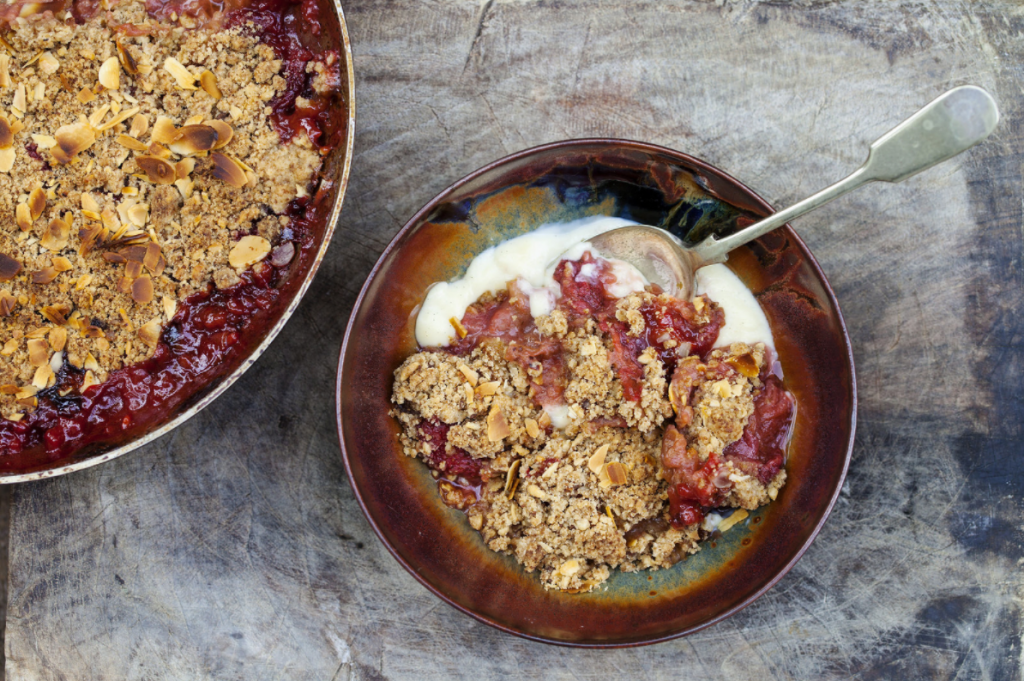
All of these recipes are available as part of our 30 Day Paleo Plan, or in my ebook Paleo Recipes to Help You Lose Weight & Shape Up Fast.
If you are not a confident cook and want to learn how to incorporate paleo into your lifestyle, consider coming along to one of our Paleo Cookery Classes.
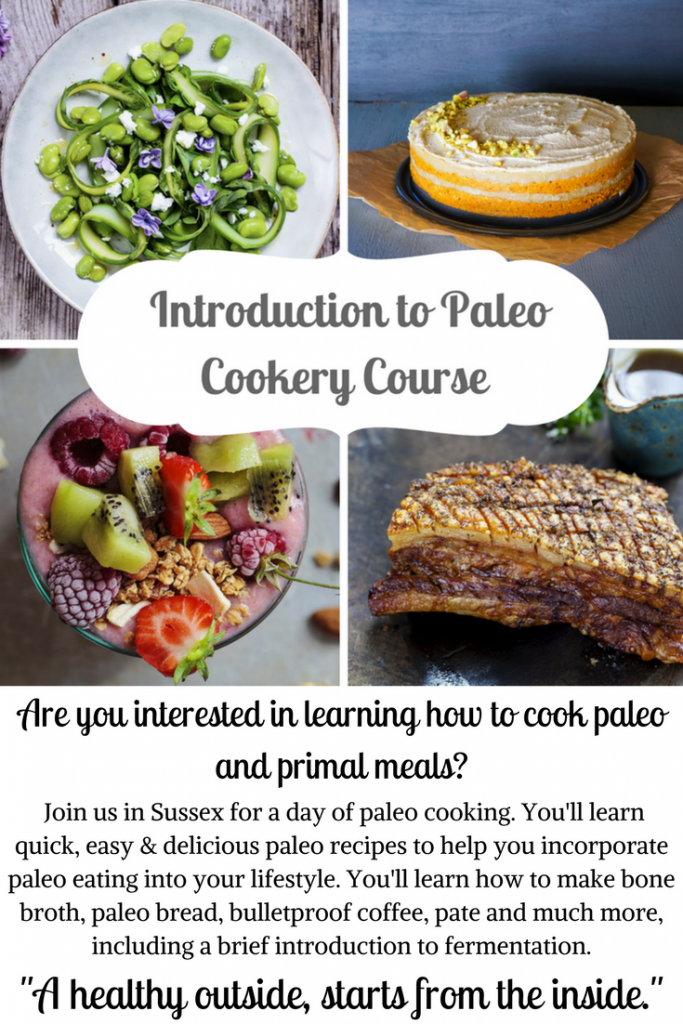
Feed Your Microbiome
I am slightly obsessed with the gut microbiome. I find the emerging research fascinating.
The best way to feed your gut microbiome is to eat a large quantity and variety of different plant foods. Aim for at least 20+ varieties each week.
Ever since My High-Fibre Paleo Experiment I have also taken prebiotic fibres. Buying fibre supplements adds up and can be quite expensive so I tend to rotate the fibres I take. You can read a detailed list of different prebiotic fibres in my post Prebiotics – Fibre to Feed your Healthy Gut Bacteria.
This month I have been taking Resistant Starch in the form of Bob’s Red Mill Potato Starch and Acacia Senegal in the form of Heather’s Tummy Fibre. I only take a couple of teaspoons of each a day. When these run out I will choose two other prebiotic fibres and take those. I also eat a lot of raw onion, shallots and garlic (at least one clove a day), these are all high in inulin.
Dr Grace Liu (The Gut Institute) is totally against resistant starch in the form of potato starch, but Chris Kresser (whose work I am a huge fan of) and Tim Steele (Potato Hack) and many others do not share those concerns. I guess all you can do is experiment and see how different prebiotic fibres make you feel.
In Eat Fat, Get Thin Mark Hyman recommends a prebiotic fibre called PGX (he also recommends taking potato starch). PGX is a mix of glucomannan with other plant fibres (alginate from seaweed and xanthan gum). Patrick Holford calls it “the king of all superfibres”. I haven’t tried this yet but plan on doing so next month so I will update you then.
*A word of caution when introducing prebiotic fibres – you need to do this slowly and drink plenty of water. Depending on the health of your gut, you may not do well with prebiotic fibres.
Cooked and cooled potatoes are also a good source of prebiotic resistant starch – next month I will post a few potato salad recipes I use which are delicious ways to eat cooked & cooled potatoes. You can also reheat cooled potatoes to increase the resistant starch content further.
Alcohol
Alcohol is definitely one of my weaknesses. I drink wine most nights but try and stick to red wine. In the book Younger, Sara Gottfried advises drinking organic red wine (in her words) “when you eschew additives, you get the full benefits of wine without the drawbacks.”
At the moment I don’t drink organic wine as find it really hard to find in the supermarkets, but I am going to start looking for it. Plawhatch Farm sell some biodynamic wine which I might try.
However, Sara Gottfried only recommends drinking a couple of glasses of wine a week.
80/20 Rule
I’m not really into the idea of eating well for 80% of the time and then rubbish foods for 20%. But, to be 100% “paleo” (whatever that even means nowadays) is not easy. You want to still be able to eat out, you want to enjoy events like Easter, you want to celebrate birthdays with cake!
I mainly try to still eat ‘real food’ if I want to eat things that are not “paleo”. Over the Easter weekend I enjoyed home cooked food that included home cooked puddings made with sugar & flour, and we had a delicious selection of cheese after lunch on Easter Sunday. I didn’t eat any hot cross buns as the ones from the supermarket really are filled with rubbish!
What I do not do is eat 80% real food and then 20% rubbish processed foods as I just don’t see the point of this. I will occasionally eat things like sourdough bread (I buy from Flint Owl Bakery – they use little or no yeast and no additives, stabilisers or preservatives of any kind. This along with long fermentations makes for easy digestion), sprouted porridge oats, buckwheat noodles and white rice, but I still avoid processed cereals and things like biscuits and packaged cakes.
To give you an idea of how often I deviate from “paleo” foods: in April I have eaten wheat/gluten twice. Once on Easter Sunday and another day when out to lunch with a friend where I ate a couple of slices of pizza. We were at Tablehurst Farm, (the sister farm of Plawhatch mentioned earlier), and on Fridays they do seriously good organic, woodfired, sourdough pizzas. We ordered one pizza between the two of us and 3 children and had a couple of slices each. I have eaten one portion of white rice, and no other grains in April.
I do eat dairy, but try to stick to raw/unpasteurised dairy. Dairy is a really good source of bioavailable nutrients so if you tolerate it I don’t see good reasons to avoid it, as long as you can source good-quality dairy.
Things To Work On
Almost everyone now recommends consuming bone broth daily (including all three books mentioned above). I love bone broth and in the Winter I am much better at this but in the Summer I find it hard and I haven’t had any bone broth this month.
In May I am going to make a big batch and freeze in ice cube trays or bags as I find this the easiest way to make myself use it regularly.
I have also only eaten liver once this month, I usually try and have it once a week. So must get back on track with that too!
Eating Out/Eating On the Go
Eating on the go and trying to stick to paleo is still pretty difficult. I commute up to London from Kent two days a week and on these days I usually take some food with me and then buy some from either Leon or Pret, which I find to be the most paleo-friendly. They both do poached egg breakfast pots, Leon do one with smoked salmon and avocado which is delicious. And both do good salads for lunch. Some branches of Pret now even serve Bone Broth!
For breakfast I will often make chia pudding the night before and take with me. Chia pudding is also fantastic to have to hand to tackle cravings for something sweet
or a craving for a dessert.
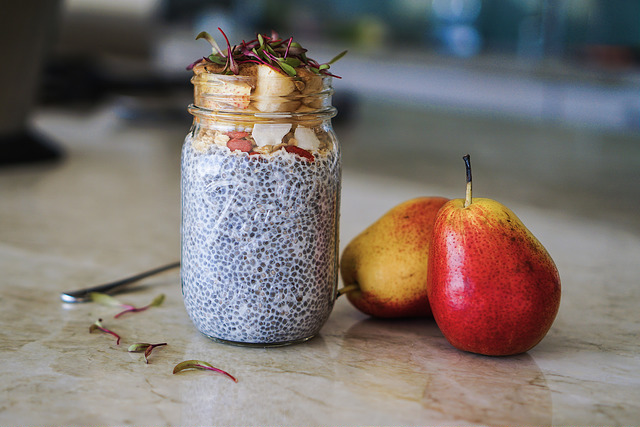
If you haven’t eaten chia seeds before then the texture definitely takes a little getting used to (they make a gelatinous gel once in liquid) but they are super filling while being low in carbohydrate and high in fibre. The coconut milk will also help keep you full and the cinnamon and vanilla help tackle sugar cravings.
The basic recipe given here can be adapted to make all sorts of different flavours – add a little cacao or cocoa powder for a chocolate version, blitz the coconut milk with blueberries, raspberries or strawberries for a berry version, replace the pear with a mashed banana for a creamy banana version.
Ingredients:
- 50g chia seeds (this is about 3 tbsp)
- 200-250ml additive-free coconut milk (you could use almond or other nut
milk) - 1 tsp. ground cinnamon
- 1 tsp. vanilla extract or the vanilla seeds from half a dried vanilla pod
- 1 grated pear
Method:
- Add all the ingredients to a mixing bowl and mix very thoroughly.
- Place into a glass jar or bowl and place in the fridge overnight.
- In the morning give everything a good stir and top with toppings of your
choice. I like to top with more fresh fruit and some ground nuts and seeds.
Variations:
- Chocolate: Mix 1 tsp. of cacao powder or 2 tsp. of cocoa powder with the chia
seeds and coconut milk. - Berry: Blitz a handful of fresh or frozen berries with the coconut milk before
adding to the chia seeds and omit the pear. - Banana: Omit the pear and soak the chia seeds in the coconut milk overnight.
Before serving mash a banana and mix thoroughly into the chia seed pudding.
What Supplements Did I take in April?
I have talked before about not being a huge fan of supplements because I think there are a lot of cheap, poor-quality supplements on the market and a whole industry surrounding them that wants us to buy their products despite there not being a lot of evidence to support their use.
That said, I do take a few supplements, and tend to rotate these depending on time of year (and also budget as many of these are too expensive for me to justify every month).
The supplements I really feel I benefit from are:
- Magnesium – at the moment I am taking Magnesium Glycinate. I suffer a bit from restless legs and magnesium seems to really help. It also helps me sleep more deeply. Chris Kresser says magnesium glycinate is the best absorbed form of magnesium taken internally so that is what I am currently taking. I also use Magnesium Oil applied topically and wrote a post a while ago about the importance of magnesium supplementation. When these supplements run out I might go back to the topical oil for a month, I tend to rotate these things to see what makes me feel best.
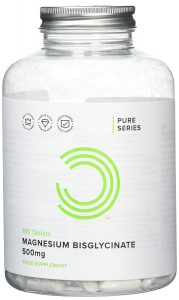
- Cod Liver Oil – I don’t eat as much oily fish or organ meats as I probably should and so I do tend to rely on cod liver oil to make up some of the shortfall that I may get were I to eat these foods more regularly. The two brands I use (Rosita and Dropi) both produce Extra Virgin Cod Liver Oils (EVCLO) in liquid and capsule forms and contain naturally occurring Vitamins A (in retinol form) and D3.
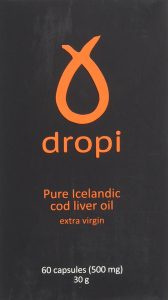
- I also mentioned above that I am taking Great Lakes Gelatin and Pure C8 MCT Oil from KetoPerformance.
- At the moment I am not taking any other supplements, but I am a big fan of probiotics and at certain times Vitamin K2 and Vitamin D3. This really depends on my diet, the time of year, and what else is going on. Vitamin D3 is vital in the Winter, but now we are in to Spring I am making a real effort to get outdoors as much as possible to get Vitamin D from the sun. My favourite probiotics are Elixa Probiotics, a super high-strength probiotic, and I recommend taking a 6-day course maybe once a quarter (or after antibiotic use if that happens).
Podcasts I listened to
I love podcasts and listen to them all the time when I am driving. A few that I really enjoyed this month
- Chris Kresser’s Revolution Health Radio: How to Slow Down Aging—with Sara Gottfried. In this podcast, Chris interviews Sara Gottfried, author of Younger, the book I mentioned above that I read this month. The book is really good but in this podcast you get a really good overview of the genetics covered in the book and it’s a great interview.
- Nourish Balance Thrive: Wired to Eat with Robb Wolf. Robb Wolf was on everyone’s podcast recently, promoting his new book Wired to Eat, but out of all the interview’s I listened to, I enjoyed this one the most. And Wired to Eat is now on my reading list for May.
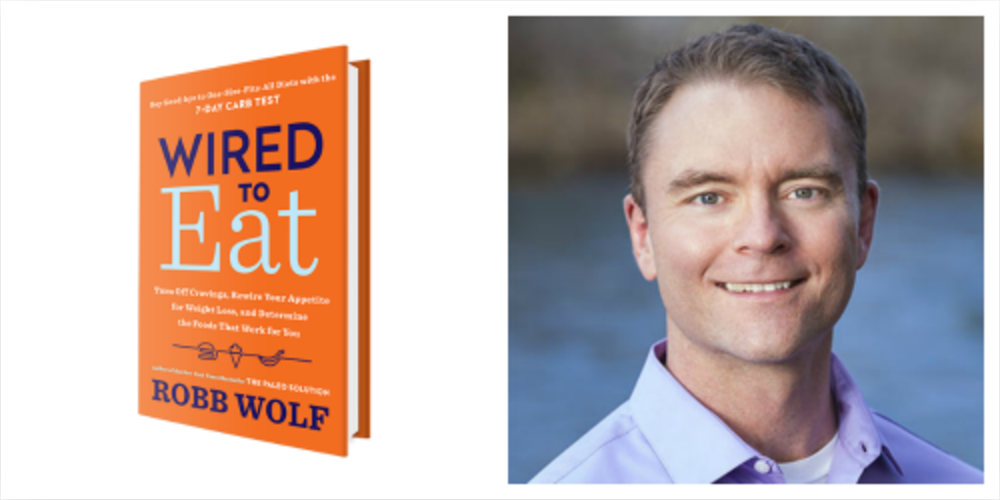
- Dr Ruscio Radio: The Dark Side of Functional Medicine. This podcast is super interesting if you have an interest in functional medicine but get frustrated by how it all seems to be about the expensive testing (which we can’t easily access here in the UK). Well worth a listen.
What Else?
Sleep is an issue for me. My youngest is only 1 and still doesn’t sleep through the night. I have three children aged 5yrs, 3yrs and 1yr and so I feel like I have spent the last 5 years being sleep deprived!
I sometimes feel like the lack of sleep unravels everything else I do to try and stay healthy. Lack of sleep is hugely ageing too 🙁

My 3 sleep sabotagers!
Exercise
I do 45-60 minutes of Pilates 5 times per week on average. This usually includes a 5-10 minute HIIT warm-up. I love Pilates because it has helped me regain a strong core, even after 3 kids.
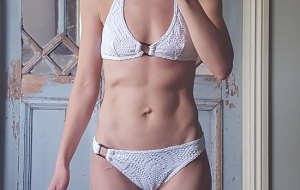
Stress Management
I am currently just over half way through a Mindfulness Based Stress Reduction (MBSR) course which I am doing in Sussex. I have had a daily meditation practice for over a year now and it has helped me manage my stress levels a lot.
Eventually I would like to teach mindfulness because in our crazy modern world it is so important that we slow down and start taking care of our mental health as well as our physical health. (Taking an in-person MBSR course is the first step for me down the teaching qualification route).
Every month I try to read a book that focuses on other aspects of health & wellness besides diet/nutrition. This month I am reading This Book Will Make You Happy by Jessamy Hibberd & Jo Usmar
If you are looking to overhaul your diet & lifestyle to improve your health, consider our 8 week Life Makeover Course. We will help you “Optimise Your Life for Health & Happiness”. Each week of the course focuses on a different aspect of health & wellbeing including diet, sleep, stress, movement and more.
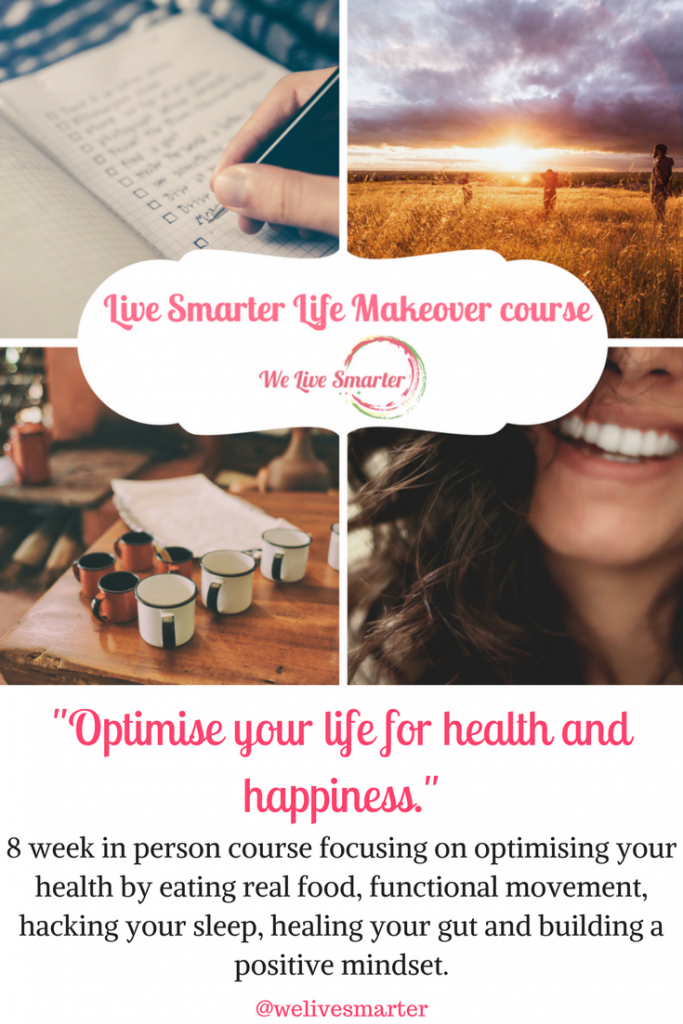
Now it’s your turn: I’d love to hear from you. How do you implement a nutrient-dense diet? Do you eat seasonal foods? What have you been doing in April to stay healthy? Leave your comments below.
Disclaimer: Paleo Britain is a participant in the Amazon EU Associates Programme, an affiliate advertising programme designed to provide a means for sites to earn advertising fees by advertising and linking to Amazon.co.uk. Buying through our affiliate links does not cost you anything but helps us keep this website up and running. Thank you!
All information provided within this blog post is for informational purposes only, and is not to be construed as medical advice or instruction. Please consult your GP or a qualified health professional on any matters regarding your health and wellbeing or on any opinions expressed within this blog post. The information provided in this blog post is believed to be accurate based on the best judgment of the author. However, you as the reader must be responsible for consulting with your own GP or other health professional on matters raised within. Paleo Britain will not accept responsibility for the actions or consequential results of any action taken by any reader.
The material in this blog post may include information, products or services by third parties. Third Party Materials comprise of the products and opinions expressed by their owners. As such, Paleo Britain does not assume responsibility or liability for any Third Party material or opinions. The publication of such Third Party Materials does not constitute our guarantee of any information, instruction, opinion, products or services contained within the Third Party Material. Publication of such Third Party Material is simply a recommendation and an expression of our own opinion of that material.
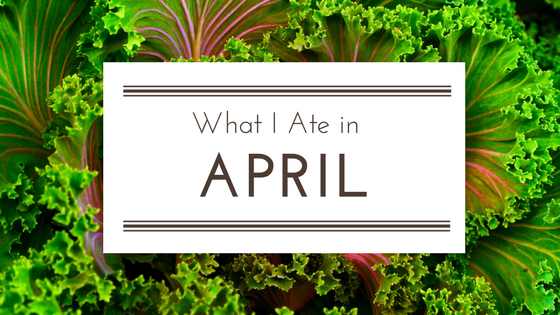
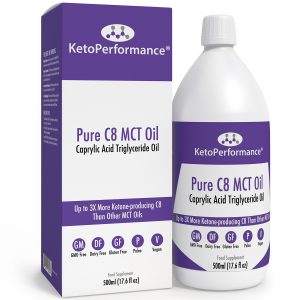
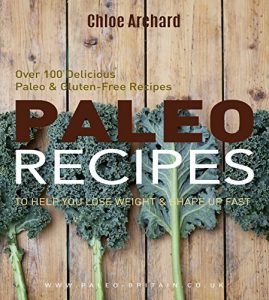
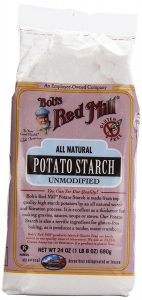
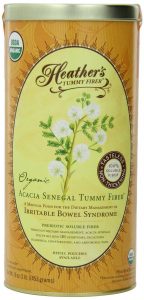
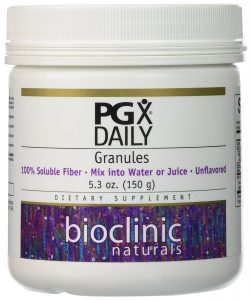
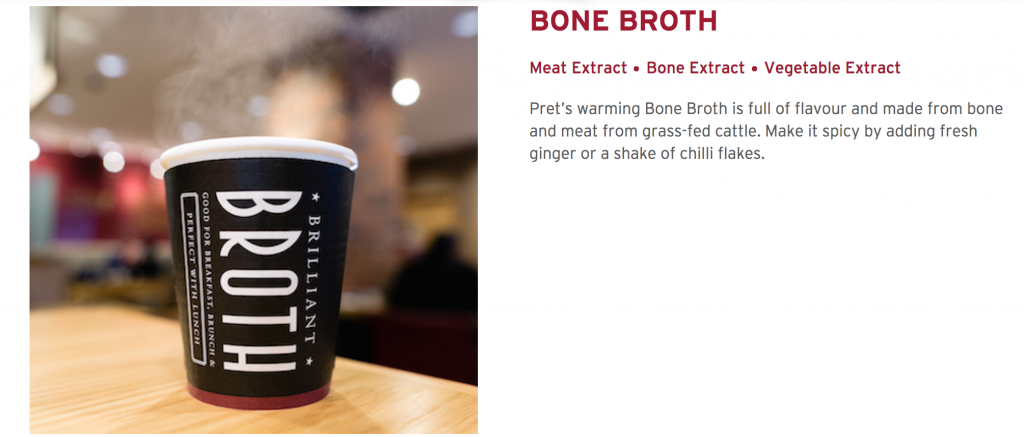
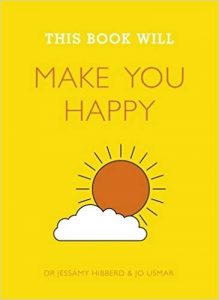

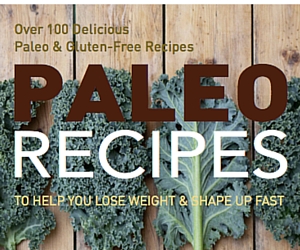
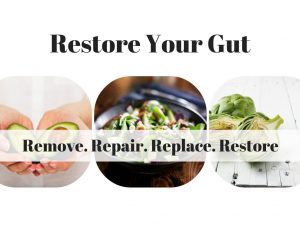
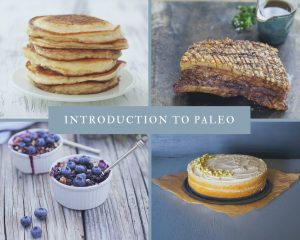

You must be logged in to post a comment.